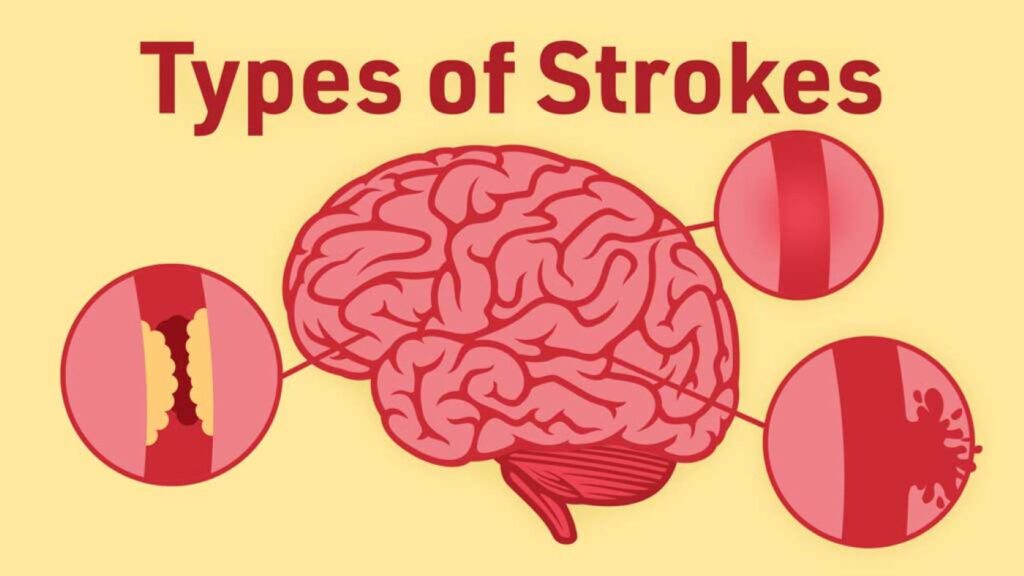Health Conditions
Most Common Type of Stroke Revealed
By understanding the nuances of this common stroke variant, we aim to equip readers with knowledge that can empower them to recognize warning signs, seek timely medical intervention, and make informed decisions regarding stroke prevention and management.
In the realm of medical emergencies, strokes are all too common and can have devastating consequences. Understanding the different type of stroke is essential for early recognition and rapid treatment. This article explores the most common types of strokes and provides insights into their causes, symptoms, and potential treatment options.
Ischemic Stroke
Ischemic strokes are the most prevalent type, occurring when a blood clot obstructs a blood vessel supplying the brain. This blockage prevents blood from reaching certain areas of the brain, leading to tissue damage and potential long-term disabilities. Ischemic strokes can be further classified into two categories: thrombotic strokes and embolic strokes.
Thrombotic strokes occur when a blood clot forms within an artery supplying blood to the brain. This type of stroke is commonly associated with atherosclerosis, a condition characterized by the buildup of plaque in the arteries. The clot may partially or completely block the blood flow, resulting in a stroke.
Embolic strokes, on the other hand, occur when a blood clot or other debris forms elsewhere in the body, usually in the heart or large arteries leading to the brain. The clot then travels through the bloodstream until it reaches a smaller blood vessel in the brain, causing a blockage.

Hemorrhagic Stroke
Hemorrhagic strokes are caused by ruptured blood vessels that lead to bleeding within the brain. This type of stroke accounts for approximately 15% of all stroke cases but often has more severe outcomes. There are two main types of hemorrhagic strokes: intracerebral hemorrhage and subarachnoid hemorrhage.
Intracerebral hemorrhage occurs when a blood vessel within the brain ruptures and leaks blood into the surrounding brain tissue. This can be a result of conditions such as hypertension, trauma, or abnormalities of the blood vessels.
Subarachnoid hemorrhage, on the other hand, occurs when there is bleeding into the space between the brain and the thin tissues that cover it. This type of stroke is often caused by the rupture of an aneurysm, which is a weakened area in the wall of a blood vessel.
Transient Ischemic Attack (TIA)
Transient Ischemic Attacks (TIAs), often referred to as “mini-strokes,” can serve as warning signs for a full-blown stroke. TIAs occur when there is a temporary disruption of blood flow to a specific part of the brain. Although TIAs do not cause permanent damage, they should never be ignored as they can be indicative of an underlying condition that may lead to a more severe stroke.
The symptoms of a TIA are similar to those of a stroke but usually resolve within minutes to hours. These symptoms may include sudden weakness or numbness on one side of the body, difficulty speaking or understanding speech, vision problems, and dizziness.

Cryptogenic Stroke
Cryptogenic strokes are a type of stroke where the cause is unknown. Despite extensive testing, it is still unclear why these strokes occur. They account for a significant proportion of all strokes, highlighting the need for further research to better understand their underlying causes and risk factors.
Embolic Stroke
Embolic strokes occur when a blood clot or other debris forms elsewhere in the body and travels through the bloodstream to the brain. These clots often originate from the heart, where they can form due to conditions such as atrial fibrillation or heart valve abnormalities. Once the clot reaches a smaller blood vessel in the brain, it can cause a blockage and result in an embolic stroke.
Lacunar Stroke
Lacunar strokes are a type of ischemic stroke that specifically affects the small arteries deep within the brain. These strokes are often caused by the narrowing or blockage of these small arteries, leading to the death of brain tissue in the affected area. Lacunar strokes are commonly associated with conditions such as high blood pressure and diabetes.

Subarachnoid Hemorrhage
Subarachnoid hemorrhage is a type of hemorrhagic stroke that occurs when there is bleeding into the space between the brain and the thin tissues that cover it. This type of stroke is often caused by the rupture of an aneurysm, which is a weakened area in the wall of a blood vessel. Subarachnoid hemorrhages are medical emergencies that require immediate attention due to the potential for life-threatening complications.
Differentiating Between Types of Strokes
Differentiating between the various types of strokes can be challenging, as the symptoms often overlap. However, understanding the key differences can help healthcare professionals make accurate diagnoses and provide appropriate treatment. Diagnostic tools such as brain imaging, blood tests, and physical examinations are used to determine the type of stroke and guide treatment decisions.
Conclusion
Arming ourselves with knowledge is key when it comes to strokes, as it can make a vital difference in saving lives and preserving brain functions. Recognizing the warning signs of strokes, such as sudden numbness or weakness, difficulty speaking, severe headaches, and vision problems, is crucial for seeking immediate medical attention.
In addition to early recognition and treatment, there are several preventive measures individuals can take to reduce their risk of strokes. These include maintaining a healthy lifestyle, managing chronic conditions such as hypertension and diabetes, quitting smoking, and engaging in regular physical activity. Regular check-ups with healthcare professionals can also help identify and address risk factors before they lead to a stroke.
By delving into each type of stroke, readers have gained a comprehensive understanding of the warning signs to watch out for, risk factors to address, and ways to prevent strokes from occurring. Armed with this knowledge, individuals can take proactive measures to reduce their risk and seek immediate medical attention if necessary.
Remember, strokes can be life-threatening, but with early recognition, rapid treatment, and lifestyle modifications, we can significantly reduce the impact of strokes on our lives and those around us.
Trusted Health, Wellness, and Medical advice for your well-being



